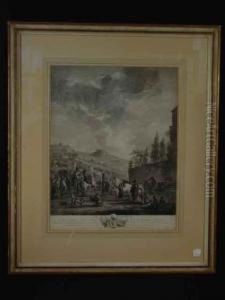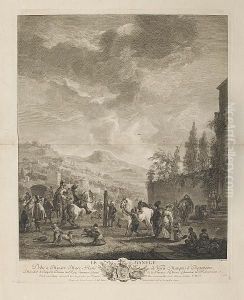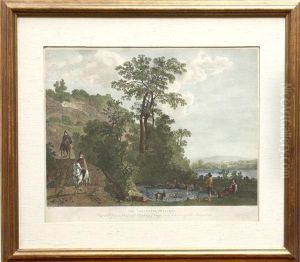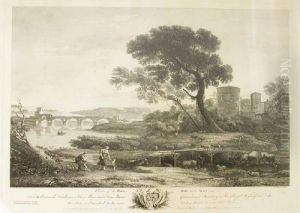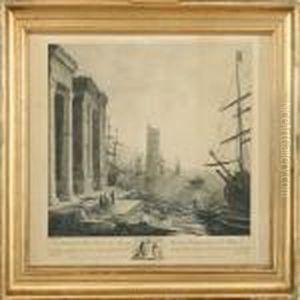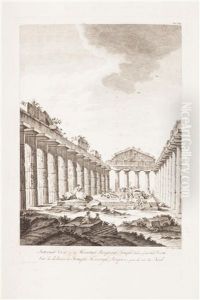Thomas Major Paintings
Thomas Major was a British engraver and printmaker, born in 1720. Major's career was largely influenced by his journey to Paris at a young age, where he was apprenticed to the renowned French engraver Jacques-Philippe Le Bas. This experience allowed him to hone his craft and absorb the French style, which was highly regarded at the time. Major's skill as an engraver was recognized when he won the Prix de Rome for engraving in 1743, an accolade that provided him the opportunity to study in Italy.
During his time in Italy, Major was exposed to the masterpieces of the Italian Renaissance, which had a lasting impact on his artistic development. Upon returning to England, he brought with him a wealth of knowledge and a refined technique that set him apart from many of his contemporaries. Major established himself in London, where he worked on reproducing works of art by old masters as well as contemporary scenes. His reproductions were not mere copies but interpretations, often imbued with his own sense of light and shadow, which reflected his deep understanding of the originals.
Major was appointed Engraver to King George III in 1789, a significant honor that acknowledged his contributions to the arts and secured his standing within the British art community. His works were widely collected, and he played an important role in the dissemination of artistic knowledge through his prints, which could be more easily distributed than paintings.
Thomas Major's legacy as an engraver lies in his ability to convey the essence of the original paintings he reproduced and in the high level of craftsmanship displayed in his prints. He was a key figure in the 18th-century British art scene, bridging the gap between the grandeur of Italian art and the burgeoning British taste for classical and continental art. Major passed away in 1799, leaving behind a body of work that continues to be appreciated for its technical skill and artistic beauty.
![[a View Of The Hexastyle Peripetral/ipetral Temple]: Three Plates](https://www.niceartgallery.com/imgs/788930/s/thomas-major-a-view-of-the-hexastyle-peripetralipetral-temple-three-plates-25e67a34.jpg)
